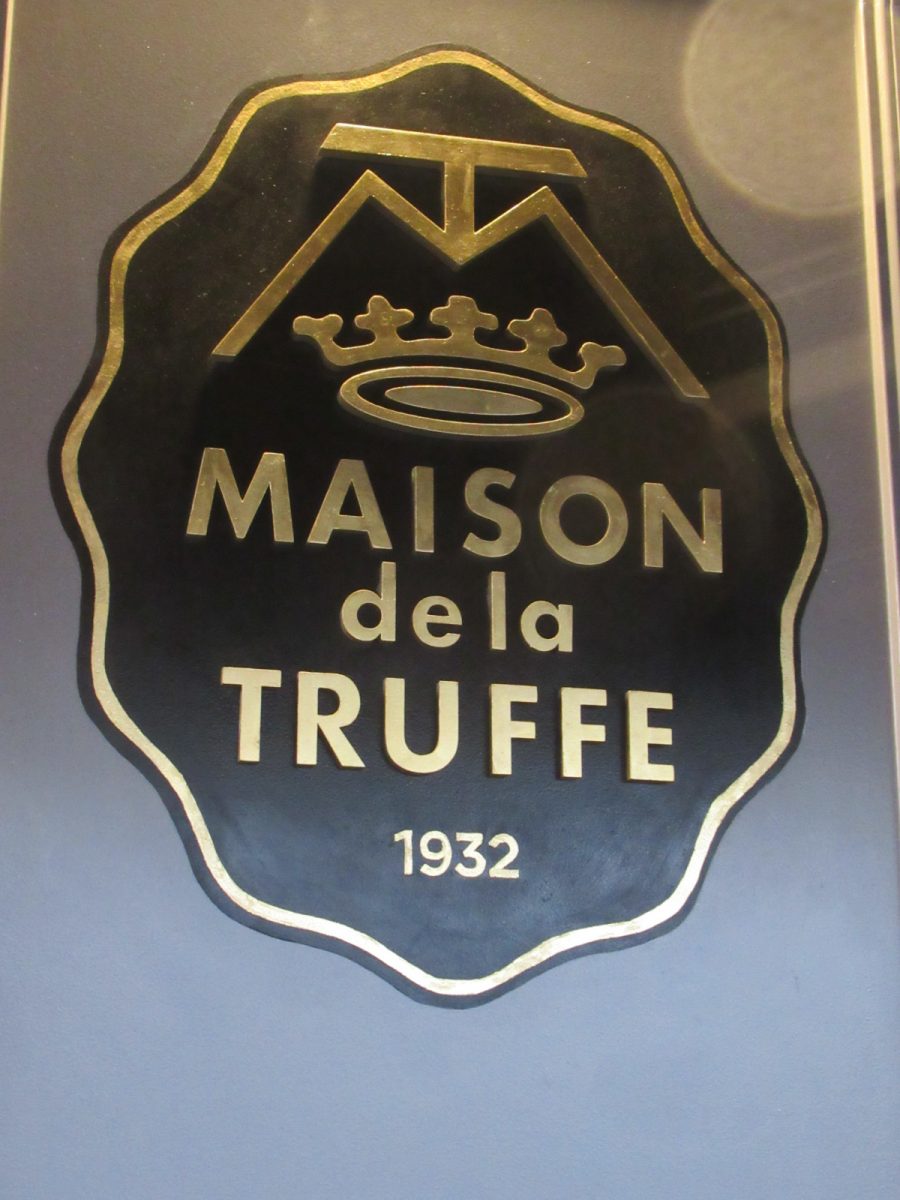Last Updated on March 8, 2024 by Marian Jones
Le Shopping in Paris is always a delight and this post explains what you need to know. We cover the city’s markets, its maze of little covered shopping arcades dating from the nineteenth century and its high-end department stores, the grands magasins whose art deco interiors and piled-high top brands lure visitors from all over the world. We run through a number of areas which are known for speciality shopping and finish with an introduction to the city’s bookshops and flea markets.
markets
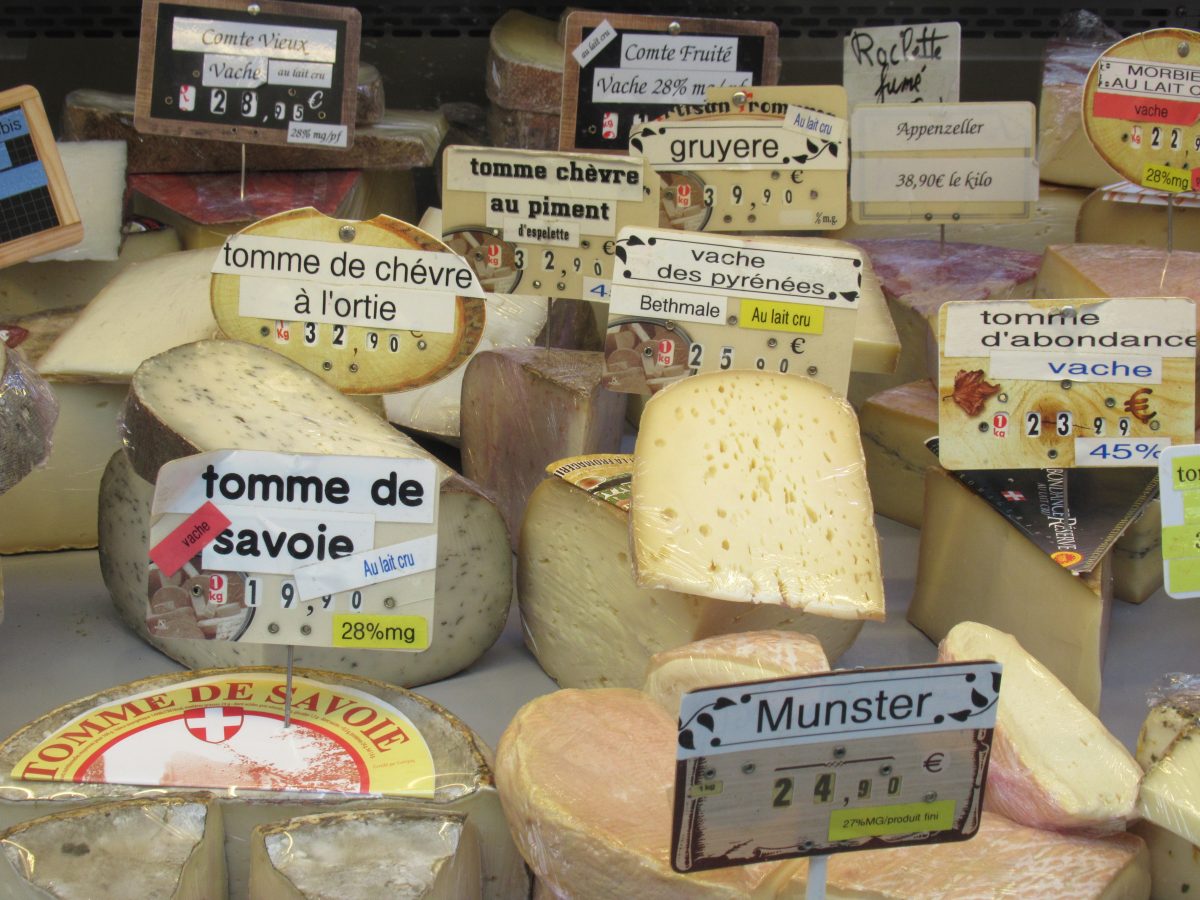


There are dozens of markets in Paris, several in each arrondissement and they are where the locals do their food shopping. If you are self-catering or buying food for a picnic, you should do the same. David Lebowitz, chef and author of The Sweet Life in Paris, writes enticingly about buying summer fruit at his local market, choosing ‘tight clusters of dewy grapes’, ‘lush ruby-red strawberries’ and ‘tiny mirabelles, those sweet little plums you can’t wait to get home and stew into the best jam you’ve ever tasted.’ The emphasis is on the best, freshest seasonal produce. But there’s an earthiness too – you may see rabbit carcasses hanging up, for example.
And here’s Alex Kapranos, author of Sound Bites: Eating on Tour, on the pleasures he found in a Parisian market: ‘Champignons, wild like delicate orchids, tumbled from wooden boxes. Monsters of the deep with claws akimbo lay spread on ice. Hares hung from hooks over coils of sausage and chickens that were thick-boned from a healthy life. Fromageries oozed their heady pungency. Patisseries seduced me with a sweet scent of tartes, a crumb of which could exhaust your tastebuds for a week.’
19th century arcades
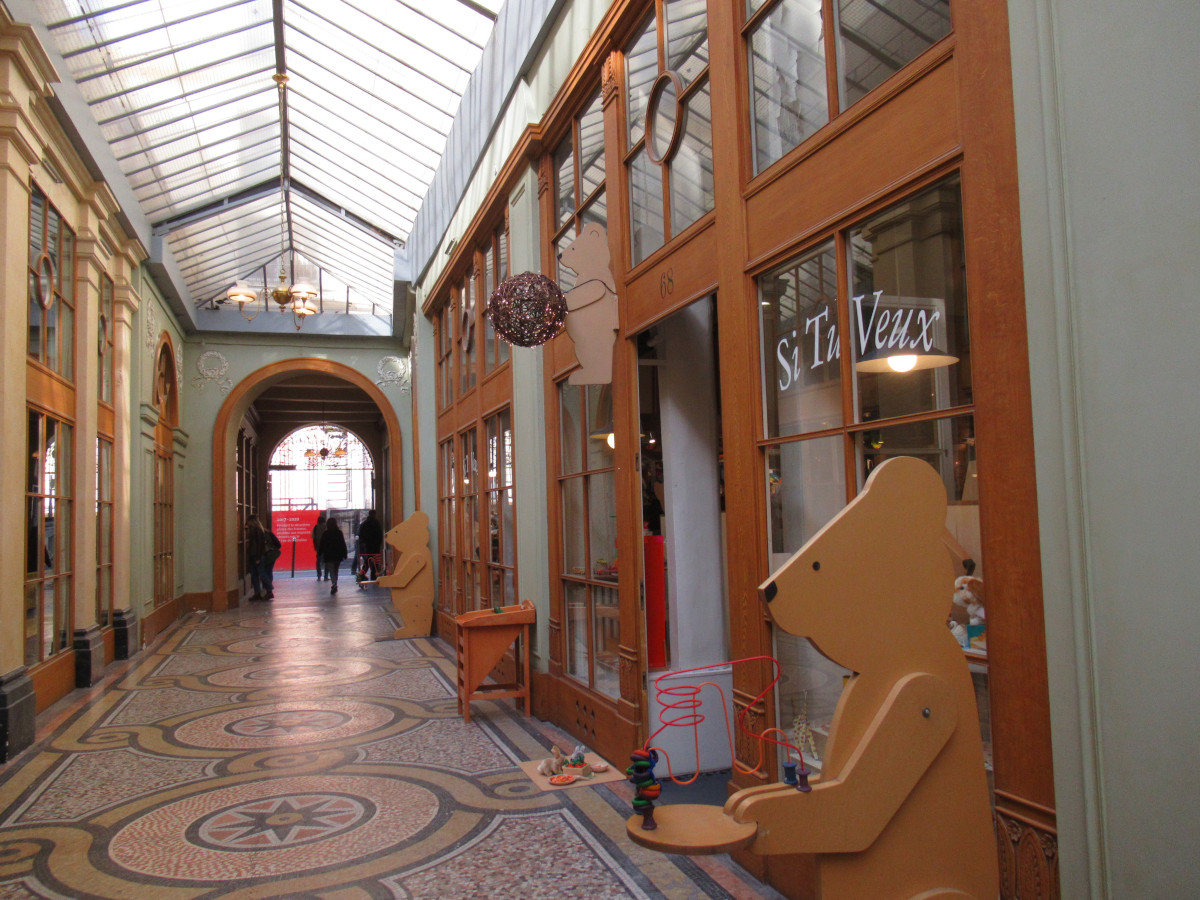

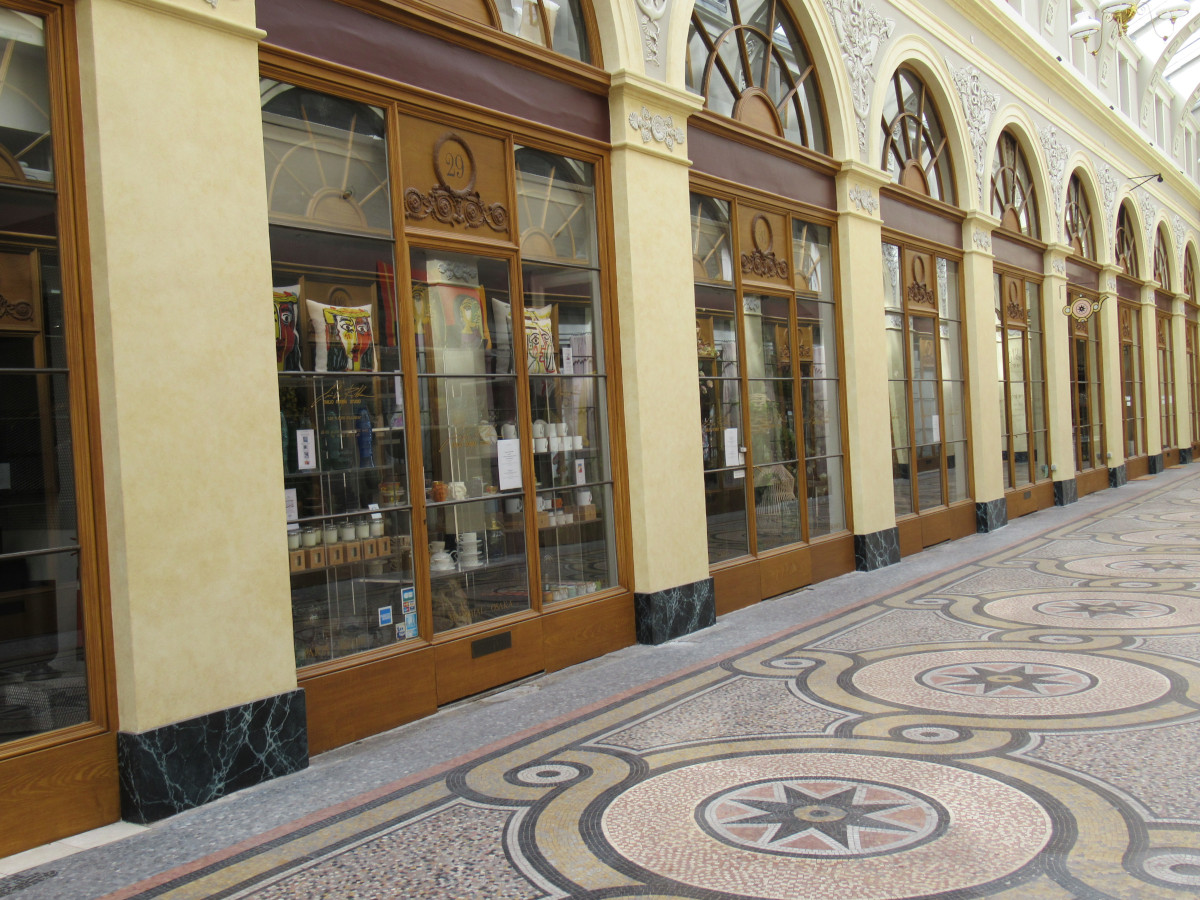
In the mid-19th century covered arcades began to open where customers – even ladies out without a chaperone! – could indulge in a little shopping away from the noise and mud of the streets. Some of these passages couverts were cleared away to make room for wide new avenues, but quite a number remain. They were – and are – atmospheric, often with glass roofs supported by an iron canopy, decorative tiled floors and an enticing array of independent shops selling everything from umbrellas and millinery to toys, books and jewellery.
One of the smartest passages still open today is the Galérie Vivienne in the 2nd arrondissement where sculptures and potted palm trees decorate the tiled marble walkways and the shops have old-fashioned wooden fronts. It’s somewhere to buy luxury goods – wine, perfume, exquisite chocolates – and browse old-fashioned wooden toys and classy decorations for the home. In the 8th arrondissement, are 3 slightly less fancy arcades – the Passages des Panoramas, Jouffroy and Verdeau with a whole array of independent businesses: specialist stamp shops, an old-fashioned chocolaterie, art galleries, second-hand bookshops with groaning shelves, an antique jewellery-maker and an upmarket second-hand emporium called the Cabinet des Curieux. Wander and be amazed at what turns up!
grands magasins



The oldest of the exclusive department stores is Bon Marché, which opened in 1852 and proved immediately popular, particularly with well-to-do ladies who were attracted by the vast choice of luxury purchases. Today, it’s still an upmarket shop with 6 sales floors and, next door, the delicatessen-style grocery, the Grande Épicerie where you can choose from a splendid array of luxury foods. 2 novels where the action centres on this iconic shop are Zola’s Au Bonheur des Dames (1883) and Albertine (2001) by Jacqueline Rose who described Bon Marché thus: ‘When you first walk in, a vast structure of glass and steel dazzles the eyes. Glass chandeliers hang from every level.’
In the 9th arrondissement are two more grands magasins which opened in the early 1900s. The Galéries Lafayette was modelled on the Opéra building, with its grand staircase and magnificent art nouveau stained glass cupola, visible from every floor. Visit the 2nd floor café, Vue sur la Coupole, for views of the latter and the 6 galleried floors which surround it. Or try the roof garden restaurant with spectacular views of the Opéra and surroundings. Just along the road (Boulevard Haussmann) is Printemps, with its own fabulous dome-topped restaurant, the Blue Coupole. Visit for high-end fashion – Leboutin shoes, perhaps – and luxury perfumes, accessories and gifts. Or, just by the Pont Neuf, try the newly re-opened La Samaritaine.
where else for ‘le shopping’ in paris?
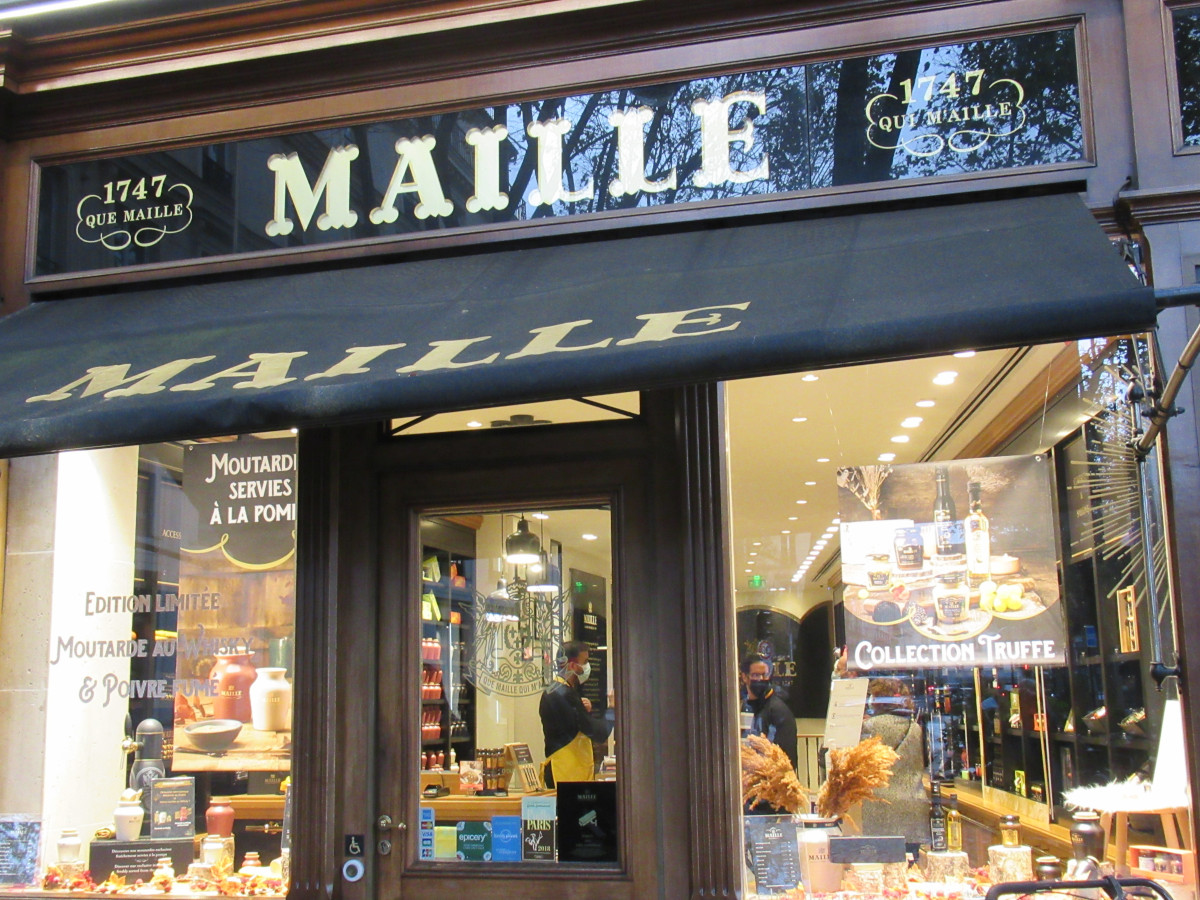

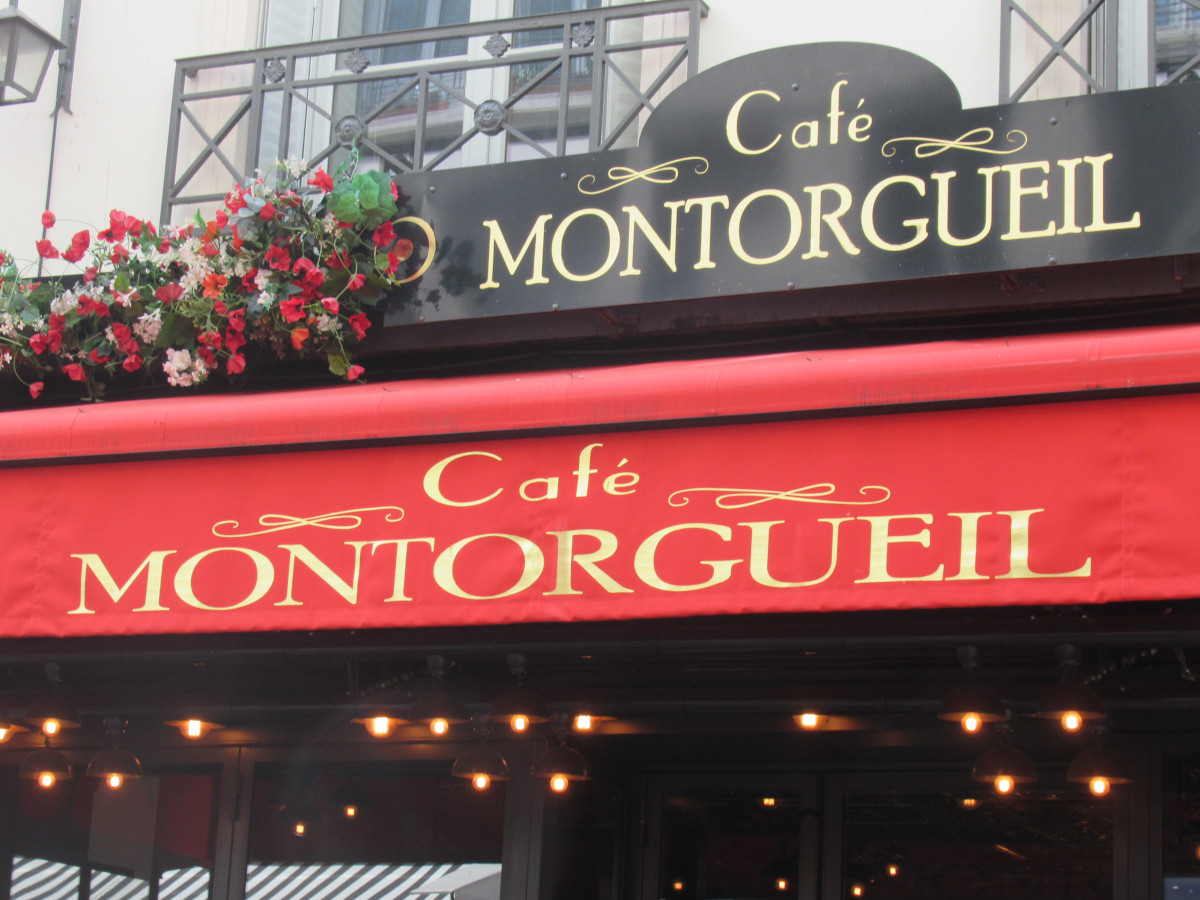
Foodies will love both Rue Montorgeuil (1st arrondissement) and Rue Cler (7th), both packed full of excellent delis and food emporia, perfect if you are self-catering or picknicking. The best policy is just to wander the past the rotisseries, fromageries, patisseries, etc, but on Rue Montorgeuil look out particularly for Stohrer and A La Mère de Famille, the city’s oldest pâtisserie and chocolaterie respectively. And on Rue Cler, just to name a few treats, you can buy speciality teas, honey, cheeses, chocolates, breads and Italian delicatessen products. One of the highlights of the upmarket food shops in Place de la Madeleine is Maille, in business since 1747 and full, full, full of speciality mustards.
Where else to wander? The Golden Triangle of Avenues Montaigne, Georges V and the Champs-Elysées is renowned for haute couture and luxury brands – think Dior Louis Vuitton, Givenchy, Yves Saint-Laurent – and find out more here If you want to window-shop for – or even buy – hugely expensive jewellery, then head to the Place Vendôme, the spectacular 1st arrondissement square where the Ritz is. You can admire Napoleon’s statue while there. Another little area where you can find plenty of fancy goods – antiques, art, exclusive furniture and ornaments – is around the Pace Fürstenberg in Saint-Germain, also home to the Musée Delacroix.
books and flea markets
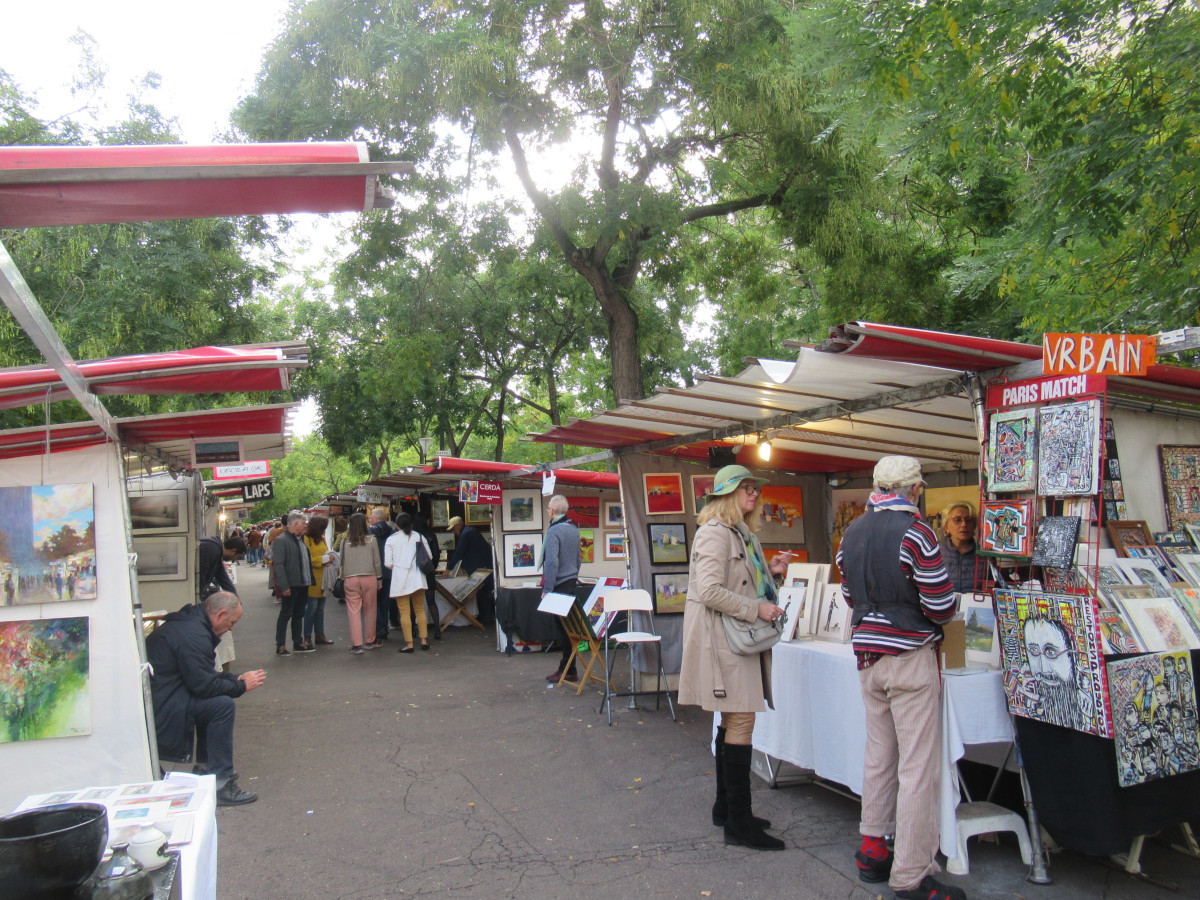
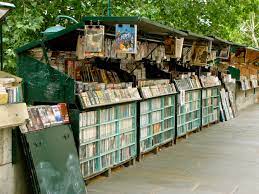
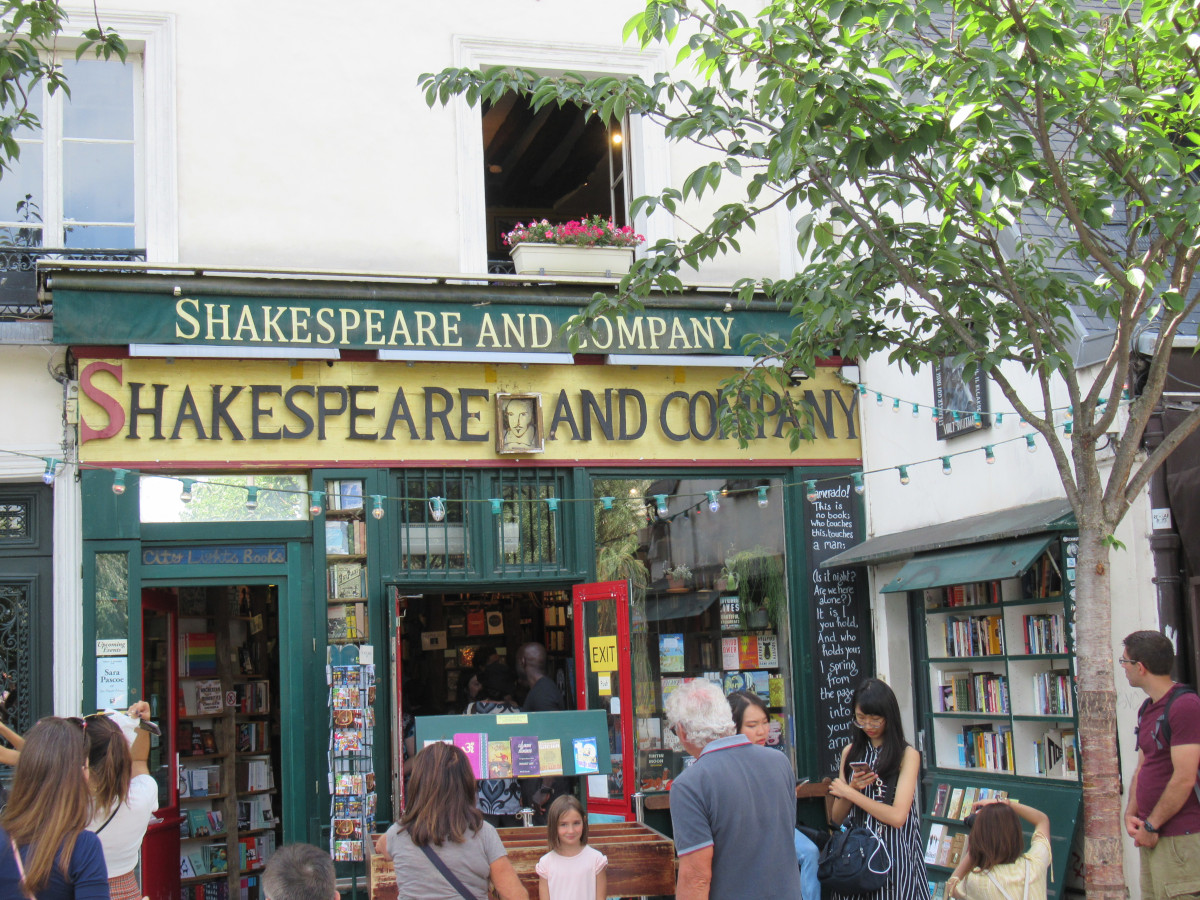
As for books, Parisians tend to shop at FNAC, which has several large branches including in the Forum des Halles and on Boulevard Saint-Germain. The most iconic choice is Shakespeare and Company, once frequented by Hemingway et al and still piled high with second-hand goodies. For a good range of new titles in both French and English there’s The Red Wheelbarrow Bookstore near the Luxembourg Gardens. If it’s atmosphere you seek, then the little area around Place de la Sorbonne is a good bet. And, most Parisian of all, don’t forget to browse a few of the 200+ bouquinistes, the little green shelters along both sides of the Seine which sell mainly second-hand books, but also posters and vintage postcards.
The best known Parisian flea market is the massive Marché aux Puces de St-Ouen, walkable from the Porte de Clignancourt metro station. Thousands of stall holders await every weekend to sell you anything, really anything, you can think of. This guide will help you navigate the many confusing choices which will confront you if you plan to visit. More centrally, there’s the Porte de Vanves flea market, also weekends only and with about 400 stalls. There’s also the Brocante des Abbesses, a Sunday second-hand market in Montmartre, also much smaller than Saint-Ouen, but good for a rummage of old paintings, bric-a-brac, vintage postcards and jewellery by trying-to-make-it young designers.
Listen to the POdcast
Reading suggestions
The Sweet Life in Paris by David Lebowitz
Sound Bites: Eating on Tour by Alex Kapranos
Albertine by Jacqueline Rose
Au Bonheur des Dames by Émile Zola
links for this post
Bon Marché
Galéries Lafayette
Printemps
La Samaritaine
Stohrer
A La Mère de Famille
Guide to Rue Cler
Guide to shopping in the Golden Triangle
FNAC
Shakespeare and Company
The Red Wheelbarrow Bookstore
Guide to Visiting Saint-Ouen Flea Market
Previous Episode Modern Art in Paris
Next Episode Café Culture in Paris

